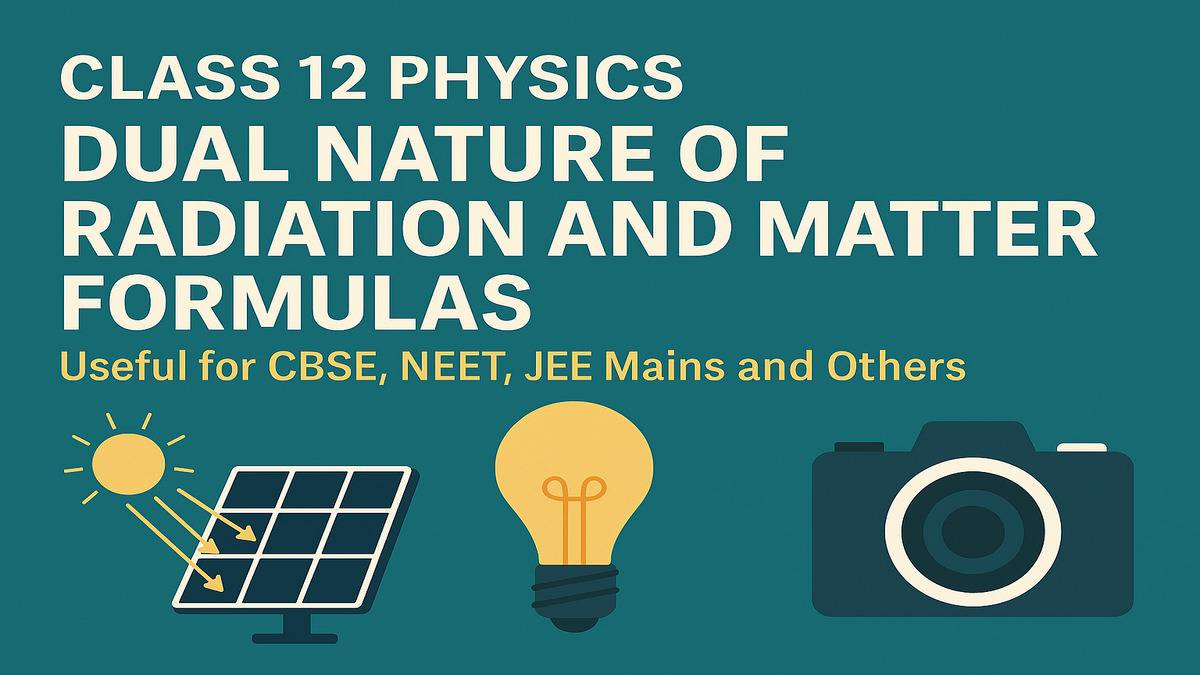Class 12 Physics Dual Nature of Radiation and Matter Formulas
This page resolves your worry of having a complete list of formulas of Class 12 Chapter 11 to revise quickly. Find all Dual Nature of Radiation and Matter Formulas and practice NCERT exercise numericals to boost your scores. These formulas are equally significant for Boards and other competitive exams.
The Dual Nature of Radiation and Matter is one of the most significant chapters in Class 12 physics for CBSE, JEE Mains, and similar type exams. The chapter revolves around the emission of electrons through a metal surface when illuminated by light. You can use formulas for this chapter to practice NCERT questions and examples.
Practice and learn concepts using the combination of NCERT Notes and the formulas list for a better understanding of the topic. Access all the formulas below:
Electron Emission
- Mass of an Electron
- Charge of an Electron
- Charge to mass (e/m) Ratio of an Electron
- Methods of Emission:
- Thermionic Emission: When free electrons come out of the metal surface due to a sufficient thermal energy supply.
- Photoelectric Emission: If electrons are emitted from a metal surface due to illuminating light of suitable frequency.
- Field Emission: When an electron is forced to come out of the metal surface due to a strong electric field.
- Work function (Φo): The minimum energy required for the electron emission from the metal surface.
- Threshold frequency: The minimum cut-off frequency of incident radiation for which photoelectric emission is possible, independent of intensity.
- Intensity of Light: The number of photoelectrons emitted per second is directly proportional to the intensity of incident radiation.
- Saturation Current: The maximum value of the photoelectric current.
- Stopping potential: The minimum negative potential applied to the metal plate for which the photocurrent becomes zero.
| Related Study Material Class 12 Physics Dual Nature of Radiation and Matter |
|---|
| Class 12 Physics Chapter 11 NCERT Exemplar Solutions |
| Dual Nature of Radiation and Matter NCERT Solutions |
| Topic-wise NCERT Notes - Dual Nature of Radiation and Matter |
| Class 12 Chapter 11 - Quick Revision Notes |
Eienstien photoelectric Equation
- Photoelectric equation:
- Maximum Kinetic Energy:
- Momentum:
- Energy of photon:
- Number of photons emitted by the source per second:
- De Broglie wavelength of a photon:

